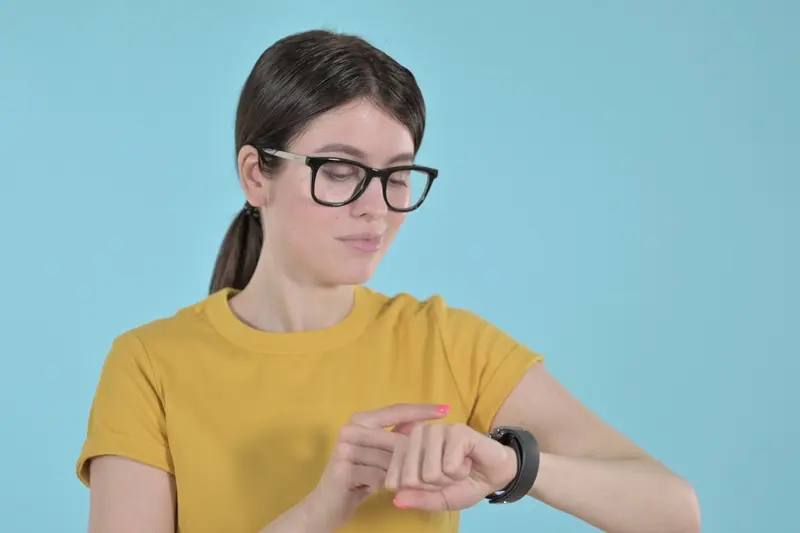How Much Does It Cost To Build A Fitness App Like Myfitnesspal?
MyFitnessPal generates over £150 million in annual revenue and has been downloaded more than 200 million times worldwide. That's a staggering number for what started as a simple calorie counting app. But here's what most people don't realise—building a health app like MyFitnessPal isn't just about creating a digital food diary. It's about constructing a comprehensive ecosystem that can handle millions of users tracking everything from their morning coffee to their evening workout.
The cost to build a fitness app like MyFitnessPal ranges from £80,000 for a basic version to well over £500,000 for a feature-rich platform. That's quite a spread, isn't it? The difference comes down to what you're actually building and how sophisticated you want it to be.
Most entrepreneurs underestimate the complexity of health apps by about 300% when they first approach us with their idea
After working with countless clients who wanted to create the "next MyFitnessPal," I've learned that the real challenge isn't just the upfront development cost—it's understanding what makes these apps so expensive to build and maintain. From massive food databases to complex nutrition calculations, every feature has a price tag that might surprise you. Let's break down exactly what you're paying for when you decide to enter the competitive world of health and fitness apps.
What Makes MyFitnessPal So Expensive to Build
When I first looked at MyFitnessPal's price tag for development, I'll be honest—I was surprised by how high it was. But after working on similar projects for nearly a decade, I can tell you there's good reason for those numbers. The app might look simple on the surface, but underneath it's running some seriously complex systems that take time and expertise to build properly.
The biggest cost driver? Data. MyFitnessPal has nutritional information for millions of food items, and that database doesn't build itself. You need teams of people entering food data, checking it's accurate, and updating it constantly. Then there's the barcode scanning feature—sounds simple, but it requires sophisticated image recognition technology that can identify products instantly.
The Hidden Complexity
What really drives up costs are the features you don't immediately think about. Real-time syncing across devices, handling millions of users logging meals simultaneously, and keeping everything secure means you need robust backend infrastructure. Plus, the recipe calculator alone requires complex algorithms to break down ingredients and calculate nutritional values accurately.
- Massive food database with millions of items
- Barcode scanning and image recognition
- Real-time data synchronisation
- Complex nutritional calculations
- Multi-platform compatibility
- Enterprise-level security systems
The development team size for a MyFitnessPal-level app typically includes 12-15 specialists working for 8-12 months. That's not just developers—you need database experts, UX designers, backend engineers, and quality assurance testers who understand nutrition data.
Core Features That Drive Development Costs
When I'm breaking down the cost of building a health app like MyFitnessPal, I always start with the foundation—the core features that users simply cannot live without. These aren't the flashy extras that make headlines; they're the bread and butter functionality that keeps people coming back every single day.
User registration and profile management might sound simple, but trust me, it's not. You need secure authentication, password recovery, social media integration, and the ability to store personal data safely. Then there's the food database—the real heart of any fitness app. MyFitnessPal's database contains millions of food items with nutritional information, and building something even remotely comparable requires serious investment in data acquisition and management systems.
The Big Three: Tracking, Logging, and Syncing
Calorie tracking and food logging functionality demands sophisticated search algorithms, barcode scanning capabilities, and portion size calculations. Users expect to find their favourite biscuits in seconds, not minutes. Exercise tracking adds another layer of complexity with workout databases, activity recognition, and integration with wearable devices.
Start with a smaller, curated food database rather than trying to match MyFitnessPal's extensive catalogue from day one—you can always expand later.
Basic reporting and progress tracking round out the core features, requiring data visualisation tools and trend analysis. These fundamental features alone typically account for 60-70% of your total development budget.
Advanced Features and Their Price Tags
Once you've sorted your core features, the real expense starts creeping in with advanced functionality. I've watched many clients' budgets balloon when they discover what premium features actually cost to build—and trust me, the numbers can be eye-watering.
AI-powered meal recommendations alone can add £15,000-£25,000 to your project. Machine learning algorithms need extensive training data, complex backend processing, and ongoing refinement. Barcode scanning with nutritional database integration? That's another £8,000-£12,000 because you're dealing with multiple APIs and real-time image processing.
Premium Features That Pack a Punch
Social features like community forums, friend challenges, and progress sharing typically cost £10,000-£18,000. People underestimate the complexity of user-generated content, moderation systems, and real-time notifications across different devices.
Wearable device integration is where budgets really stretch. Supporting Fitbit, Apple Watch, and other fitness trackers means building multiple API connections and handling different data formats—expect £12,000-£20,000 for comprehensive integration.
| Advanced Feature | Development Cost | Complexity Level |
|---|---|---|
| AI Meal Recommendations | £15,000-£25,000 | High |
| Barcode Scanning | £8,000-£12,000 | Medium |
| Social Features | £10,000-£18,000 | Medium-High |
| Wearable Integration | £12,000-£20,000 | High |
The key is prioritising which advanced features you actually need for launch—you can always add more later once you've proven market demand.
Design and User Experience Investment
When building a health app like MyFitnessPal, the design and user experience isn't just about making things look pretty—it's about creating something people actually want to use every day. I've worked on plenty of fitness apps over the years, and I can tell you that the ones with poor UX get deleted faster than you can say "calorie counter". Users expect smooth navigation, quick loading times, and an interface that doesn't make them think too hard about where to tap next.
The cost for professional UX/UI design typically ranges from £8,000 to £25,000 for a comprehensive health app. This includes user research, wireframing, prototyping, and visual design across multiple screens. Food logging needs to be intuitive, progress tracking should feel rewarding, and the overall experience must encourage daily use rather than frustrate users into abandoning their fitness goals.
Good design is like a good joke—if you have to explain it, it's probably not working
The investment in design pays dividends in user retention and app store ratings. A well-designed health app reduces the learning curve for new users and keeps them engaged longer. When people find your app easy to use, they're more likely to recommend it to friends—and that's worth every penny of the design budget.
Development Team Structure and Costs
Building a fitness app like MyFitnessPal isn't a one-person job—you'll need a proper team of skilled developers, and that's where things get expensive. Most projects need at least four key people: a project manager to keep everything on track, a backend developer to handle the server work, a mobile developer (or two if you want both iPhone and Android), and a designer to make it look good.
Core Team Requirements
The project manager alone will cost you around £400-600 per day, and they'll be involved throughout the entire build. Your backend developer needs to be experienced with databases and API development—expect £500-700 daily for someone who knows what they're doing. Mobile developers with fitness app experience? You're looking at £450-650 per day, and if you want native apps for both platforms, you'll need two of them.
Budget Breakdown
Don't forget about the designer—good UI/UX people charge £350-500 daily, and they'll be working closely with your developers for weeks. If you're building something as complex as MyFitnessPal, you might also need a DevOps engineer (£400-600 daily) to handle deployment and scaling. Add it all up over a 4-6 month development period, and your team costs alone could easily hit £150,000-250,000 before you've even started marketing.
Technical Infrastructure and Backend Expenses
Building a health app like MyFitnessPal means you need some serious computer power behind the scenes. Think of it like this—when millions of people are logging their meals and checking calories at the same time, your app needs to handle all that without crashing. That's where the real money gets spent, and trust me, it adds up quickly.
The backend infrastructure is where your app lives and breathes. You'll need cloud servers that can grow with your user base, databases to store all that food information, and security systems to keep people's health data safe. Amazon Web Services or Google Cloud are popular choices, but expect to pay anywhere from £500 to £5,000 per month depending on how many users you have.
Database and Storage Costs
Here's something most people don't think about—food databases are massive. MyFitnessPal has nutritional information for millions of foods, and storing all that data isn't cheap. You're looking at around £10,000 to £50,000 just to licence a comprehensive food database, then ongoing storage costs of £200 to £1,000 monthly.
Security and Compliance
Health apps need extra security because they handle personal medical information. This means encryption, secure servers, and regular security audits. Budget at least £15,000 to £30,000 for proper security implementation.
Start with a smaller server setup and scale up as your user base grows—this can save you thousands in the early stages whilst your app gains traction.
Conclusion
Building a fitness app like MyFitnessPal isn't cheap—we're talking anywhere from £80,000 to £300,000+ depending on how ambitious you want to get. That's a lot of money, and I won't pretend otherwise. But here's what I've learned after years of building apps: the cost isn't just about writing code and creating pretty screens.
The real expense comes from all those features that users expect without thinking twice about them. The food database that needs constant updates, the barcode scanner that actually works, the social features that keep people engaged, and the backend infrastructure that won't crash when thousands of people log their breakfast at the same time. Each of these seemingly simple features requires serious technical work.
My advice? Don't try to build everything at once. Start with the core features that solve your users' main problem—probably food logging and basic tracking. Get that right first, then add the bells and whistles later. You'll save money, launch faster, and actually learn what your users really want rather than what you think they want.
The fitness app market is competitive, but there's always room for something that genuinely helps people. Just make sure you've got the budget to do it properly.
Share this
Subscribe To Our Learning Centre
You May Also Like
These Related Guides

How Much Does It Cost To Build A HIPAA-Compliant App?

How Much Does It Really Cost to Build a Fintech App?



